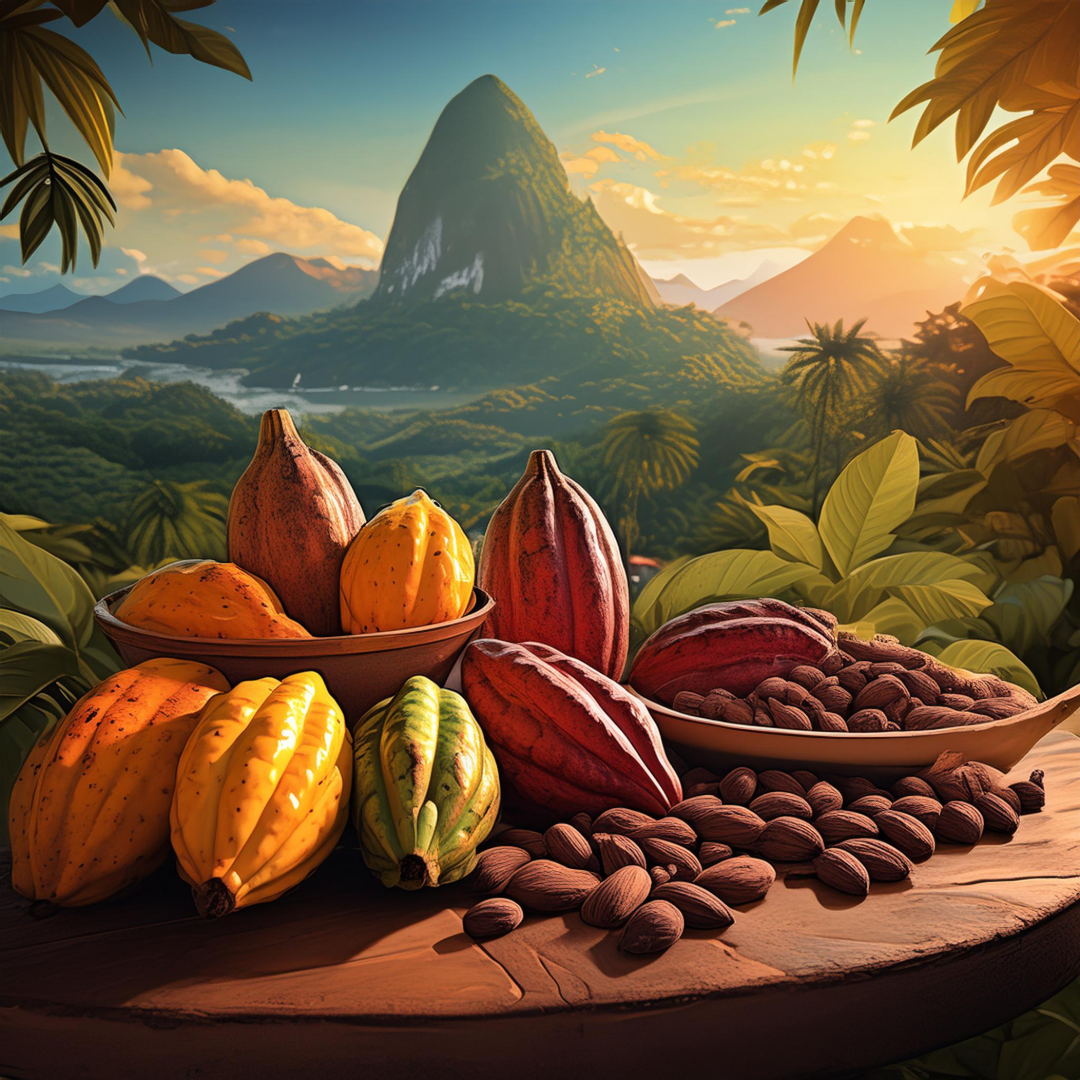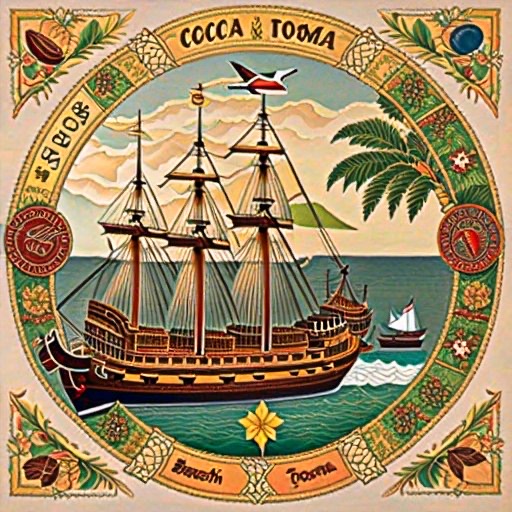
The Early Days of Cocoa in Brazil
The cocoa tree, *Theobroma cacao*, has its roots in the rainforests of the Amazon Basin. When the Portuguese arrived in Brazil in the early 16th century, they found the indigenous people already cultivating and consuming cocoa.
The Aztecs and Mayans in Central America had long used cocoa in their rituals and as a form of currency, and this knowledge spread through the European explorers.
Brazil quickly became a hub for cocoa cultivation under Portuguese rule. The tropical climate and fertile soil of the Bahia region proved ideal for growing cocoa trees. By the 18th century, cocoa had become an essential crop in Brazil, supporting both local consumption and export to Europe, where it was highly prized.
The Transfer to São Tomé
The journey of cocoa from Brazil to São Tomé is a story of colonial ambition and agricultural experimentation.
São Tomé and Príncipe, small islands off the west coast of Africa, were colonised by the Portuguese in the late 15th century. Initially, the islands were used for sugar cane production, but by the 19th century, the focus began to shift towards cocoa.
In the mid-19th century, Portuguese colonists, recognising the similarities between the climates of Bahia and São Tomé, decided to introduce cocoa cultivation to the islands. The transfer involved taking cocoa seedlings from Brazil and establishing them in São Tomé's rich volcanic soil.
São Tomé: From Experiment to Cocoa Powerhouse
The experiment proved to be an overwhelming success. São Tomé's climate and soil conditions were perfectly suited to cocoa cultivation. By the late 19th and early 20th centuries, São Tomé and Príncipe had become leading cocoa producers globally. This transformation was not without its challenges. The colonists relied heavily on forced labour, often bringing enslaved people from Angola and other parts of Africa to work on the plantations. The harsh conditions and exploitation led to significant suffering and resistance among the local population.
Despite these dark chapters, São Tomé's cocoa production continued to flourish. The island's "roças" (plantations) became renowned for their high-quality cocoa, contributing to the global chocolate industry. European chocolate manufacturers, including some in the UK, sought out São Toméan cocoa for its superior flavour and quality.

Today, São Tomé and Príncipe are small but important players in the cocoa industry, although their prominence has been overshadowed by larger bulk producers like Côte d'Ivoire and Ghana. However, the islands are experiencing a resurgence of

